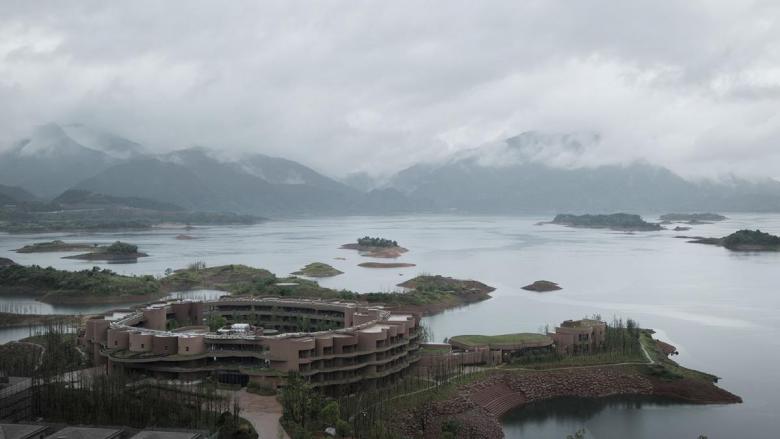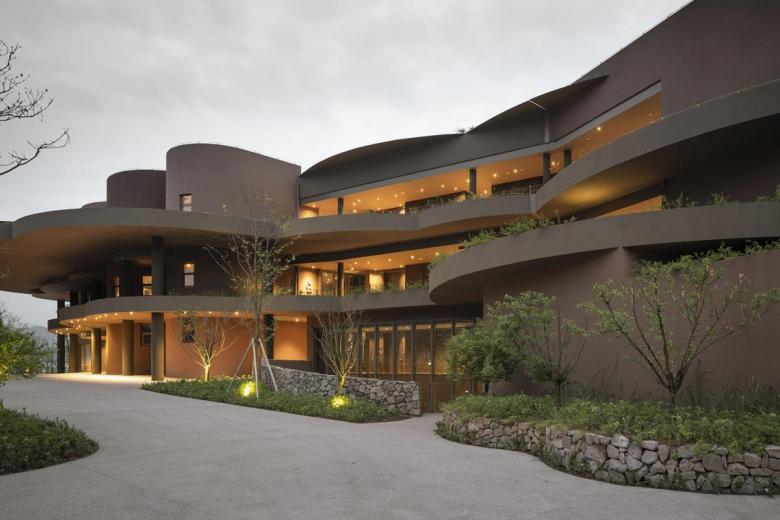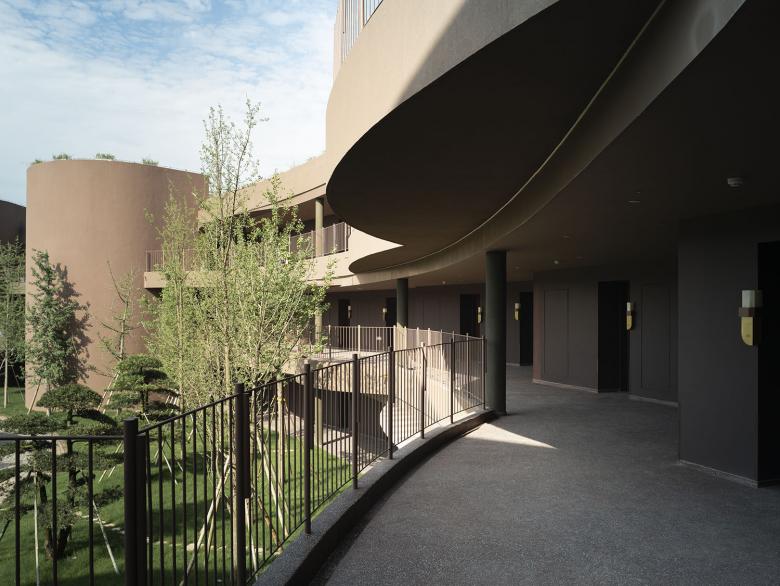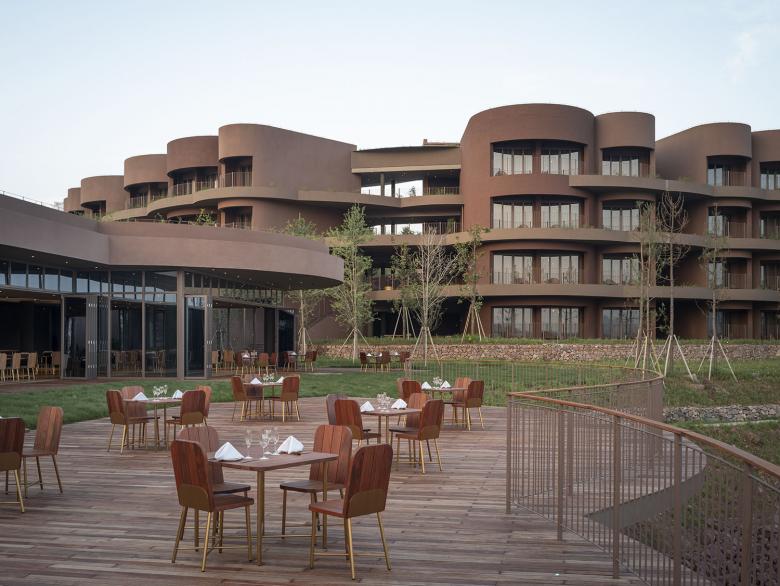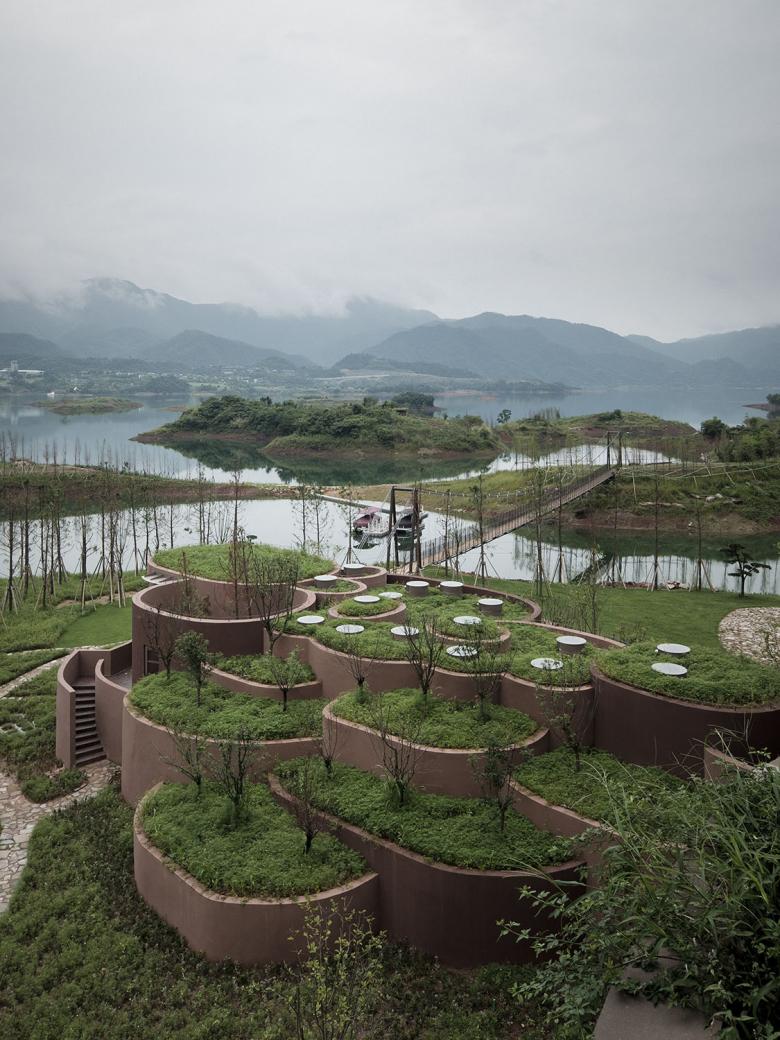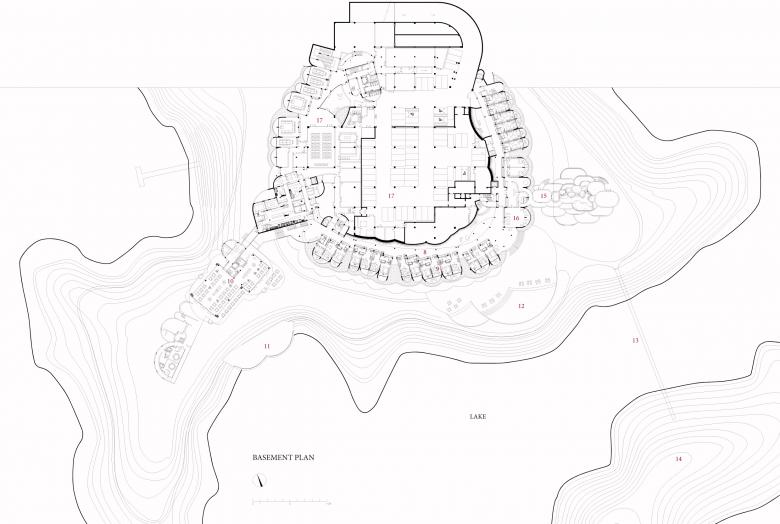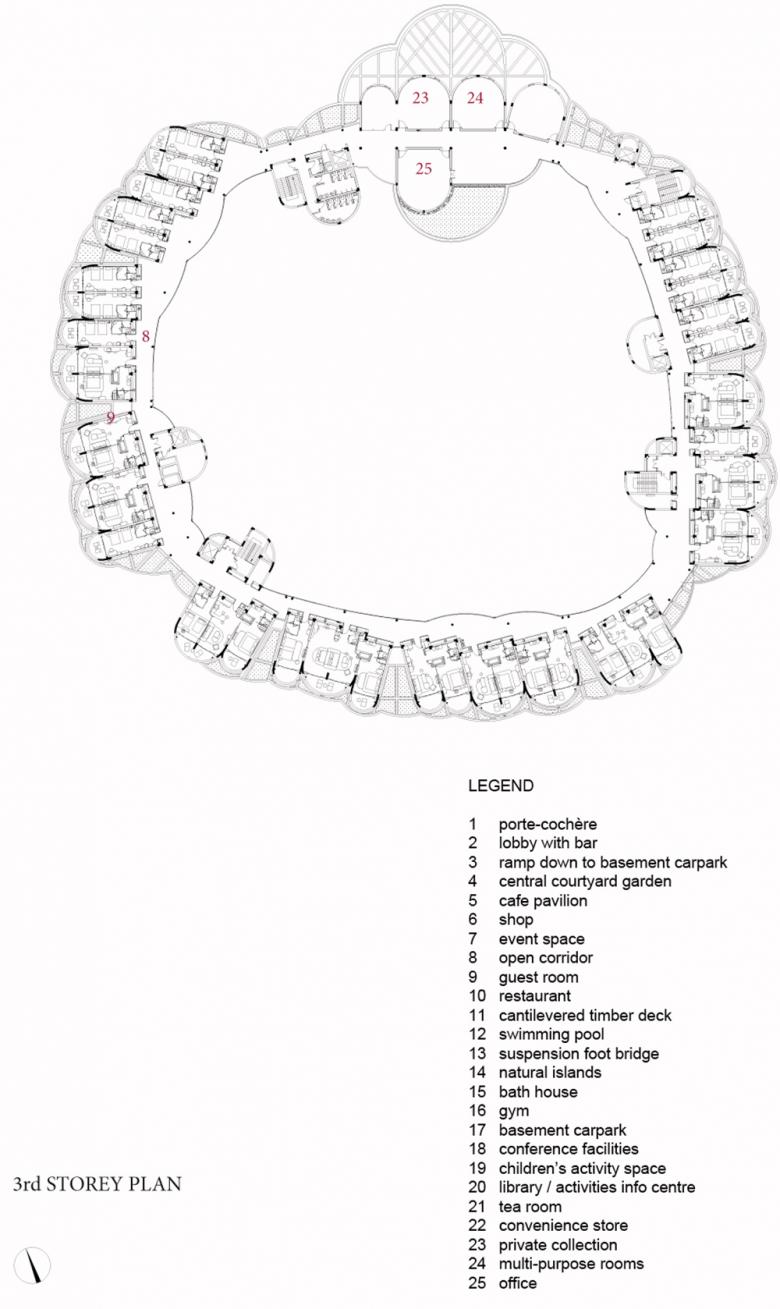Hotel on the Lake by KUU
Eduard Kögel
24. October 2018
Photo © Eiichi Kano
The Thousand Islands Lake (Qiandao Hu) was created as an artificial reservoir almost 60 years ago. The water masses drive the Xin’an river hydroelectric station, completed in 1959. The water covered countless villages and an ancient city, which is still well preserved today. The lake’s name comes from the fact that the sunken hilly landscape created over 1000 islands, which turned the area into a recreational landscape with an overwhelming natural beauty. The team of KUU around Satoko Saeki and K.M. Tan designed a four-storey resort hotel with 99 rooms on the picturesque lakeshore.
Project Location: Pingshan District, Qiandaohu, Zhejiang Province, China
Chief Designer: K.M. Tan, Satoko Saeki
Team: KUU
Local Collaborator: Guangzhou Jianzhu Yishu Design Institute, Ningbo Branch; Bluetown
Clients: Henda Dazhong Jiudian
Design Period: 2014–2015
Completion Date: May 2018
Area: 11,200 sqm
Photographer: Eiichi Kano
© Eiichi Kano
The hotel is located east of the city Chun’an on a promontory in front of several organically formed islands. The architects were inspired by the natural landscape and designed the complex as an open, porous structure that connects with the surrounding open space. The complex is arranged around a garden courtyard, whereby the rooms are connected with an open corridor to the central courtyard. All rooms open onto the lake and offer views of the surrounding island landscape. To break the size of this ring block, rooms and service cores are structured as smaller curved elements that stand out from the core volume. Thus, the building becomes multifarious in a uniform language of curved components.
© Eiichi Kano
The central courtyard is planted with trees and abstract-looking plants, such as cut black pines that look like giant bonsais, ginkgo trees with yellow leaves in autumn and winter plum trees with their straight centripetal branches. The landscaping around the hotel is more natural, mainly with wildflowers and grasses as well as refined cut pines.
© Eiichi Kano
Some smaller islands opposite the main building are easily accessible via a suspension bridge. These are an integral part of the hotel landscape, where you can get much closer to the water. Here you can wander between wild grasses and blackberries, and looking back you can see the main building, which has the same reddish brown colour as the earth on which it stands. The organically shaped architecture looks like a hill village or a citadel rising from the ground and connecting with the landscape. On these smaller islands you can swim in the lake, fish, canoe, take ferries to other islands or pick vegetables and fruit. The main building in connection with these islands offers an experience of recreation and nature.
© Eiichi Kano
In the central garden there are three island-like pavilions: a café, a shop and a room for exhibitions or events. On the ground floor, the restaurant lies like an appendage on a small promontory with the best view of the surrounding water landscape. The wellness bath is located in another outsourced building with point-shaped lighting from above. The sickle-shaped pool in front of the hotel looks like an abstract extension of the lake.
© Eiichi Kano
The spacious corridors allow views from the inside to the outside and sometimes extend to larger terraces. As you walk, you feel the garden, its smells, sounds and climate are part of the immediate experience. In addition to the architecture and the landscape, KUU also designed all the interiors, the lighting, the logo and the visual identity of the hotel as well as the uniforms of the employees. With particular sensitivity, the architects integrated the hotel into its surroundings.
© Eiichi Kano
The design strategy follows an attitude that remains comprehensible in both the small and the big decisions and is reflected in a 'landscape' of things, which reinforces the character of the place with restraint. The lobby could be called a landscape of furniture, the signs are made of organically shaped wooden elements and the clothes of the employees are layered according to the season.
© Eiichi Kano
The basic idea of an organic insertion into the picturesque scenery of the artificial island landscape is sustained from the large to the smallest detail, thus forming an identifiable design language that, with restrained elegance, created a refuge that makes the outside world forget. The architectural interventions created many small stages, which through their integration into the whole offer a discreet world of experience for the visitors.
